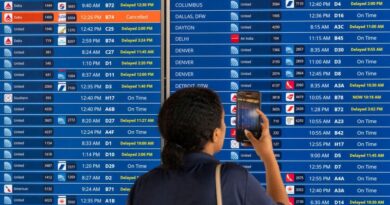Martin Lewis urges Brits to double-check their payslips | Personal Finance | Finance
Martin Lewis has returned from his summer break, prepared to assist households in boosting their bank balance and reducing monthly outgoings. In this week’s Money Saving Expert (MSE.com) newsletter, the consumer champion has revealed a detailed ‘September Savers’ checklist featuring 22 items, encompassing compensation for travel delays, childcare support, and tax refunds.
The financial guru is urging people to examine their payslips to check their tax code, as “millions of these are wrong each year”. He also stressed that it’s not your employer’s responsibility to ensure it’s accurate, but yours. The Personal Allowance has stayed at £12,570 since April 2021 and is the most prevalent tax code.
This shows on payslips as ‘1257L’ and signifies the sum you can earn without needing to pay tax, reports the Daily Record. The current financial year began on April 6, but if you’ve changed jobs, received a pay rise (or decrease) since then, you need to confirm you’re on the right tax code – otherwise, you could be owed a refund, or owe HM Revenue and Customs (HMRC) money.
In the MSE newsletter, Martin explained: “If you’re an employee (ie, you work for someone), it’s important to understand that legally your tax code is your responsibility to check, not your employer’s nor HM Revenue and Customs’. Millions of these are wrong each year.”
He added: “If yours is, you may be overpaying tax and due money back, or underpaying and likely to face bill shock in future.” One saver contacted the team to reveal her remarkable success after utilising the Tax Code Checker tool and guidance on MSE.com, which delivered a tax rebate of £9,400.
Michelle explained how she had previously been self-employed but had stopped trading three years earlier, yet her tax code had remained unaltered, resulting in excessive payments.
She said: “It took an hour on the phone, but I have never earned so much in an hour, I have now been refunded £9,400! Thank you so much Martin.” Martin also urged anyone who had undertaken summer employment to examine their tax code closely, as they may have paid too much tax as well.
He recommended: “Do also check you paid the right tax. If the only work you do is in the summer, you’re unlikely to earn enough for your income to be over the standard £12,570 Personal Allowance for the tax year. Yet employers take tax off as if you’d earn the same each month (or worse, you’re put on an emergency tax rate).”
You can establish whether you might qualify for a rebate by using the guide on MSE.com here.
Checking your tax code
The simplest way to do this is by examining your payslip. Once you’ve noted down your Personal Allowance tax code, you can visit the GOV.UK website and utilise the online “Check your Income Tax for the current year” service.
This tool, applicable for the current tax year, can be used to verify your tax code and Personal Allowance, and to see if a tax code has been altered. Additional features of this online service include enabling users to view an estimate of how much tax they will pay over the entire tax year.
However, this service is not available for self-employed workers. Government guidance states “You cannot use this service if Self Assessment is the only way you pay Income Tax.”
Understanding tax code numbers
The numbers in a worker’s tax code indicate their tax-free income for that tax year, also known as the Personal Allowance. Typically, you multiply the number in the tax code by 10 to determine the total amount of income they can earn before being taxed.
For instance, a worker with the tax code 1257L can earn £12,570 before being taxed. If they earn £30,000 per year, the taxable income is £17,430 (£30,000 – £12,570).
Deciphering the letters
The letters in a worker’s tax code refer to their circumstances and how it impacts their Personal Allowance. A comprehensive list of tax code letters and their meanings can be found on the UK.Gov website here.
Most frequently used letters:.
L – For a worker entitled to the standard tax-free Personal Allowance.
S – For a worker whose main residence is in Scotland.
BR/ SBR – For a second job or pension.
M – For a worker whose spouse or civil partner has transferred some of their Personal Allowance.
N – For a worker who has transferred some of their Personal Allowance to their spouse or civil partner.
T – When HMRC needs to review some items with the worker.
If your tax code ends with ‘W1’, ‘M1’ or ‘X’
W1 (week 1) and M1 (month 1) are emergency tax codes that appear at the end of an employee’s tax code, such as ‘577L W1’, ‘577L M1’ or ‘577L X’.
If your tax code starts with a ‘K’
Tax codes beginning with ‘K’ indicate that you have income not being taxed in another way and it’s worth more than your tax-free allowance.
For most people, this occurs when:
- paying tax you owe from a previous year through your wages or pension
- getting benefits you need to pay tax on – these can be state benefits or company benefits
Your employer or pension provider deducts the tax due on the income that hasn’t been taxed from your wages or pension – even if another organisation is paying you the untaxed income.





